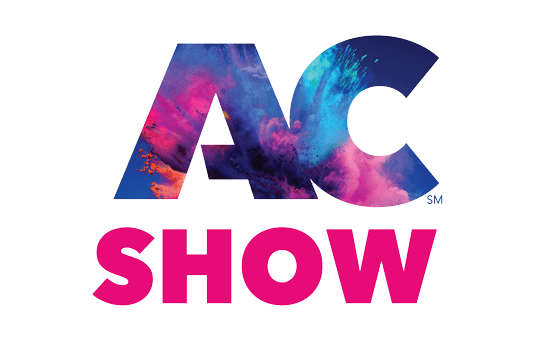Pre-Conference Tutorials
Tuesday, April 5 | 8:00 – 9:30 am

TUTORIAL 1:
RAY FERNANDO, CALIFORNIA POLYTECHNIC STATE UNIVERSITY
This tutorial is aimed at both seasoned professionals and those new to rheology. Participants will develop an understanding of basic rheology theory, be able to design meaningful experiments to characterize sample products, recognize and mitigate potential problems and pitfalls encountered during measurements, and interpret rheological data.

TUTORIAL 2:
W. MARSHALL MING, GEORGIA SOUTHERN UNIVERSITY
Discussed and put forward in a variety of applications, including exterior and interior architectural coatings, industrial coatings, and even automotive coatings, effective and lasting easy-cleanability and self-cleanability of surfaces are quite high on the wish-list of coatings functionality. This tutorial will explain the different concepts that are put to work in such coatings and review the state-of-the-art systems in practice.

TUTORIAL 3:
BRIAN SKERRY, CONSULTANT (FORMERLY OF THE SHERWIN-WILLIAMS COMPANY)
What principles govern the corrosion of metals, and how can protective coatings help in preventing corrosion? This tutorial will review the fundamentals of electrochemical processes, and typical ingredients and formulation characteristics of anticorrosive coatings will be outlined and discussed.

TUTORIAL 4:
TIMOTHY DECEMBER, BASF
Waterborne coating is a fast-developing technology. In many applications, these systems have become a standard solution, replacing their solventborne counterparts. In some important clearcoat or topcoat applications, however, solventborne systems remain the preferred technology. This tutorial will discuss what is possible today with waterborne clearcoats for different substrates—including wood and metal—and what is not. It covers the theory behind different binder technologies, as well as fundamental aspects of the film-formation process and the performance of these coatings systems. This tutorial will also cover some fundamental aspects of rheology for waterborne applications.

TUTORIAL 5:
MIKE JEFFRIES, COVESTRO
Their chemistry is very versatile, as is their application and application potential: Polyurethane (PUR) coatings and their typical components—polyisocyanates and polyols—will be reviewed and compared in this tutorial. This includes a discussion of the various PUR coatings technologies in use and their advantages and limitations, such as 1K and 2K solventborne, as well as waterborne chemistries, radiation-curing PUR coatings, and PUR powder coatings formulations, and their typical end-use applications.
Tuesday, April 5 | 10:00 – 11:30 am

TUTORIAL 6:
JAMES RAWLINS, UNIVERSITY OF SOUTHERN MISSISSIPPI
This tutorial will examine the most recent emerging technologies that provide a basis for the development of smart coatings. A brief discussion of smart polymers and coatings, governing principles, types and examples of smart coatings, necessary raw materials, approaches for their preparation, their unique properties, applications, and markets will be presented.

TUTORIAL 7:
MICHAEL DIEBOLD, CHEMOURS
Coatings formulators are increasingly interested in finding ways to use less TiO2 without compromising opacity performance. This tutorial covers TiO2 light-scattering fundamentals and provides practical advice and strategies to maximize TiO2 efficiency. In addition, alternative technologies for paint opacity will be discussed.

TUTORIAL 8:
BETH ANN BROWNE, IFF
Prevention of microbial contamination in the wet-state and microbial defacement of the dry-film are critical objectives for coatings manufacturers. Biocide selection is complex, and formulators need to consider global regulatory status, sustainability concerns, and impact on paint properties, in addition to antimicrobial efficacy spectra including resilient micro-organisms that thrive in manufacturing facilities. This tutorial will guide participants through the biocide selection process. Topics will include in-can preservation (including a bacteriology overview, detecting and enumerating contaminants, and in-can test methodologies), dry-film protection (including fungal overview, dry-film defacement, and test methods), biocidal chemistry overview, and regulatory overview. Microbial audits of manufacturing facilities and industrial hygiene will also be discussed.

TUTORIAL 9:
ERIK SAPPER, CALIFORNIA POLYTECHNIC STATE UNIVERSITY
Artificial intelligence (AI) and machine learning (ML) applications are making broad and deep impacts in diverse fields and industries around the world. Polymer chemists are familiar with structure-property relationships that are used to describe the properties of macromolecules. Coatings formulators are becoming more adept at using principles of statistics and designed experiments to more thoroughly optimize their formulations and production processes. This tutorial will introduce attendees to a new way of approaching formulation science that augments traditional thinking with artificial intelligence and machine learning tactics and strategies. Strategies for implementing AI/ML workflows in the laboratory will be discussed, as well as approaches for handling unstructured, textual data. No prior mathematical or computational background is expected of attendees.

TUTORIAL 10:
DOUGLAS MAZEFFA, THE SHERWIN-WILLIAMS COMPANY
As sustainability efforts continue to gain prominence in both the regulatory landscape and marketplace, manufacturers are tasked with the challenge of designing products to meet standards that are often ambiguous or problematic from a business perspective. This session will provide an overview of Life-Cycle Assessment and the leading green building programs to give context around this topic. Also discussed will be the forthcoming ACA Sustainability Program, which is a standard being developed through a multi-attribute, open-stakeholder process for architectural coatings to ensure that a credible eco-label exists for coating products. This effort is being completed to create a best-in-class program for use in leading Green Building Standards and incorporates elements of Life-Cycle Assessment and Life-Cycle Thinking.
